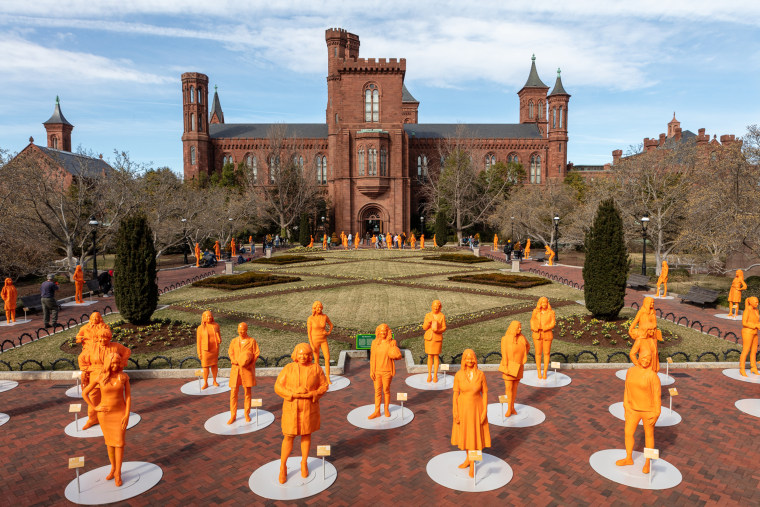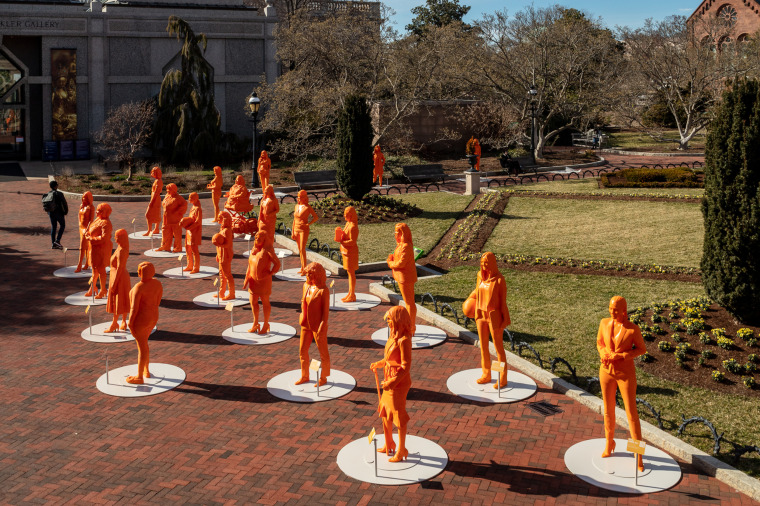The Smithsonian is commemorating Women's History Month by honoring more than a hundred women who are changing the future.
On TODAY Friday, the Smithsonian unveiled a new historic exhibit, “#IfThenSheCan — The Exhibit," featuring 120 life-size 3D statues of women who have excelled in the fields of science, technology, engineering and mathematics, or STEM.
The exhibit, at the Smithsonian Gardens in Washington, D.C., will be on display there and in select Smithsonian museums from March 5 to 27. In a statement, the museum called it “the largest collection” of women statues ever assembled.

The female trailblazers honored in the exhibit include Jessica Esquivel, one of only 150 Black women with a Ph.D. in physics in the United States, and Karina Popovich, a college student who with a 3D printer made over 82,000 pieces of personal-protective equipment for healthcare workers during the coronavirus pandemic.
Another, Rae Wynn-Grant, is a wildlife ecologist working to save endangered species and other wildlife from extinction.
Wynn-Grant, a National Geographic explorer, told TODAY correspondent Hallie Jackson how proud she was to be a part of the exhibit.
"The depth of the honor is shocking," she said. "In the best way possible, it's the deepest honor. It's beyond money or fame. There is this symbolism and reverence that is indescribable."
Wynn-Grant visited her statue with her daughter, Zuri. She said that seeing it in person made her realize just how much her hard work had paid off.
"In the work that I do as a scientist studying wild animals and trying to keep them from going extinct, I spend a lot of time away from home," she said. "Every time I have to say goodbye, it's hard to leave and in a lot of ways, the statue and her being able to see it is an indicator that what I'm doing is important, a service to the world and I'm being recognized for it. It's evidence that she can remember."
Each statue features a QR code that visitors can scan with their phones to learn more about the woman depicted. Some of the statues were previously displayed in Texas and New York.

Nicole Small, CEO of Lyda Hill Philanthropies, an organization that partnered with the Smithsonian on the exhibit, said the project was especially important for girls and young women to see.
"When our families and our kids are walking around looking at the people that are held up as role models they’re not seeing anyone that looks like them and we knew we wanted to fix that problem," she said.
"We are calling this exhibit, the 'If Then She Can' exhibit because we know that if we show little girls all these amazing women doing all this amazing work in this world that each of them will know that they too can grow up and they too can change the world," Small said.